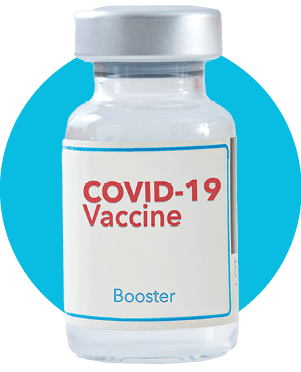In the News
ALCOHOL DEATHS RISE FOR OLDER AMERICANS

An alarming new study shows that alcohol-related death rates more than doubled in the past two decades, with particularly high levels among older Americans.
“Alcohol is the leading avoidable cause of premature death and disability in the United States,” says Charles H. Hennekens, M.D., an author of the study, which was published in the American Journal of Medicine.
The dramatic increase in alcohol-related deaths (such as from cirrhosis and alcohol poisoning) was especially high among 55- to 64-year-olds. That group had the highest level of mortality—with 39.3 deaths per 100,000 people. The numbers have worsened since 1999 for every age group, including rising from 15.9 to 27.1 deaths per 100,000 for 65- to 74-year-olds.
The troubling numbers for older Americans are driven by several factors, says Hennekens, a professor of medicine at Florida Atlantic University’s Schmidt College of Medicine. Older adults can suffer from the cumulative effects of excessive drinking for many years. They don’t process alcohol as well as when they were younger. And other ailments that are on the rise, such as obesity, can add to the impact of excessive drinking.
The effects of alcohol on medications commonly used by older Americans also can be risky, says Alison A. Moore, M.D., a geriatric medicine professor at the University of California, San Diego, and head of its Sam and Rose Stein Institute for Research on Aging and Center for Healthy Aging. Alcohol can negate some of the benefits of certain drugs, and exacerbate the side effects of others, such as lowering blood pressure too much.
Alcohol is a factor in many diseases, including high blood pressure, stroke, and breast and prostate cancers. And older adults have weaker immune systems, so stressing the system more with alcohol can leave people vulnerable to infection, Moore says.
APPOINTMENTS ONLY AT SOCIAL SECURITY
Social Security beneficiaries can no longer just drop in at a local or regional office to get an issue resolved. Beginning in January, those seeking a face-to-face meeting will be required to make an appointment at their local office, the Social Security Administration recently announced.
“In recent years, some Social Security offices have seen growing walk-in lines that have resulted in lower levels of service, including cut offs of lines before closing time,” an SSA spokesperson wrote to the Bulletin. Turning to appointment-based services is expected to reduce wait times and improve customer experience.
Customers wanting personal service will have to call their local office or the SSA’s national number (800-772-1213) to schedule an appointment, including for Social Security card requests. Many tasks can also be completed online at ssa.gov/onlineservices. Military personnel, people with terminal illnesses, and individuals requiring immediate attention can still walk in for service at field offices, the SSA spokesperson said.
Chronic Pain Surges Among Those 65-Plus
Chronic pain has reached alarming levels in the U.S., with nearly a quarter of Americans saying they had discomfort that had an impact on their daily life or work activities in 2023, and 8.5 percent reporting “high-impact” pain, defined as pain that can cause opioid misuse, anxiety and depression, according to the Centers for Disease Control and Prevention.
The number of people in pain has increased steadily from 2019, when 1 in 5 claimed chronic pain and 7.4 percent noted high-impact pain.
The statistics are even more striking for people 65 and older, with the CDC finding 36 percent experienced chronic pain in 2023. And 13.5 percent of older Americans reported high-impact chronic pain.
Women of all ages were slightly more likely to report both chronic pain and more severe pain in 2023—25.4 percent of women reported chronic pain and 9.6 percent described high-impact pain. That compared with 23.2 percent and 7.3 percent of men.
Spring COVID Booster Advised

Older Americans who recently got an updated coronavirus vaccine should plan to roll up their sleeves in the spring for another shot.
The Centers for Disease Control and Prevention late last year issued a recommendation that adults age 65 and older receive a second dose of the latest COVID-19 vaccine, after a panel of experts that advises the CDC reviewed the latest data on the durability and effectiveness of the vaccines in older adults.
COVID has settled into a more predictable pattern in the past few years, though the virus continues to spread throughout the year. Cases climb in the winter months, when flu, RSV and other respiratory illnesses spike. But they also tend to surge in the summer.
“If we want to provide maximum protection for those people at highest risk, they should get their vaccine in the fall in order to help get them through the winter,” says William Schaffner, M.D., professor of preventive medicine at Vanderbilt University School of Medicine. “But by the time they get to May, their protection will have waned ... So let’s give them two doses every year.”
But with COVID, things can change. “Of course, if a substantially new variant crops up, then we’ll have to reevaluate,” Schaffner says.
The shots don’t cost most people anything out of pocket.
MUNCHIES

The easing of marijuana laws is having a health impact little discussed—expanded waistlines from pot-related cravings. Using NielsenIQ consumer data, researchers found states that decriminalized cannabis saw spending rise on snack foods (13 percent), cookies (17.5 percent) and candy (8.5 percent).
FROM TOP: GETTY IMAGES (2); RINGO CHIU/GETTY IMAGES